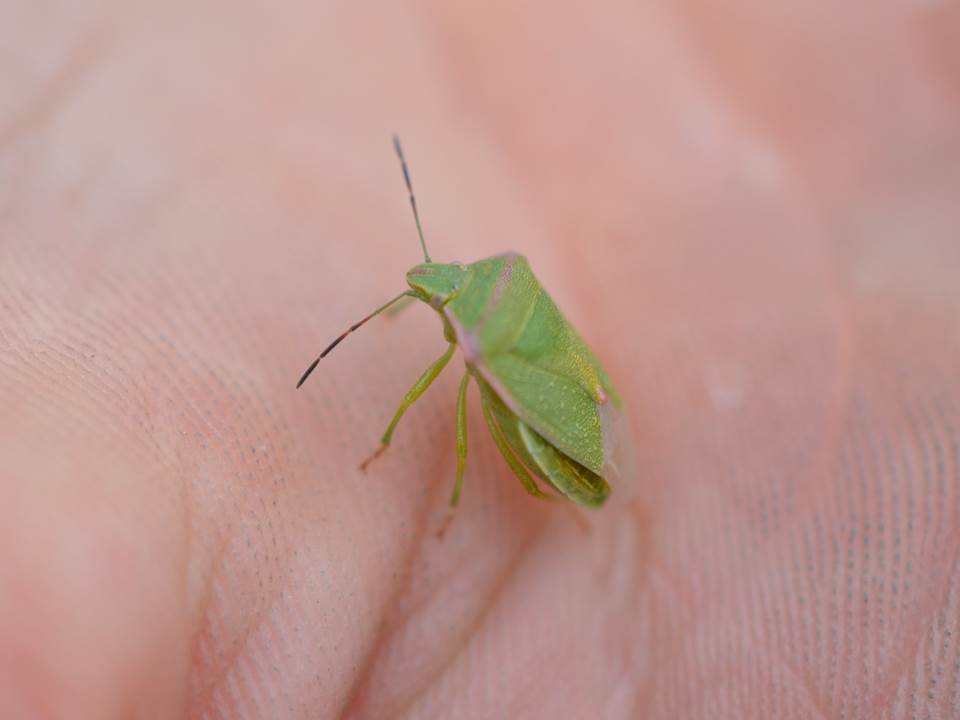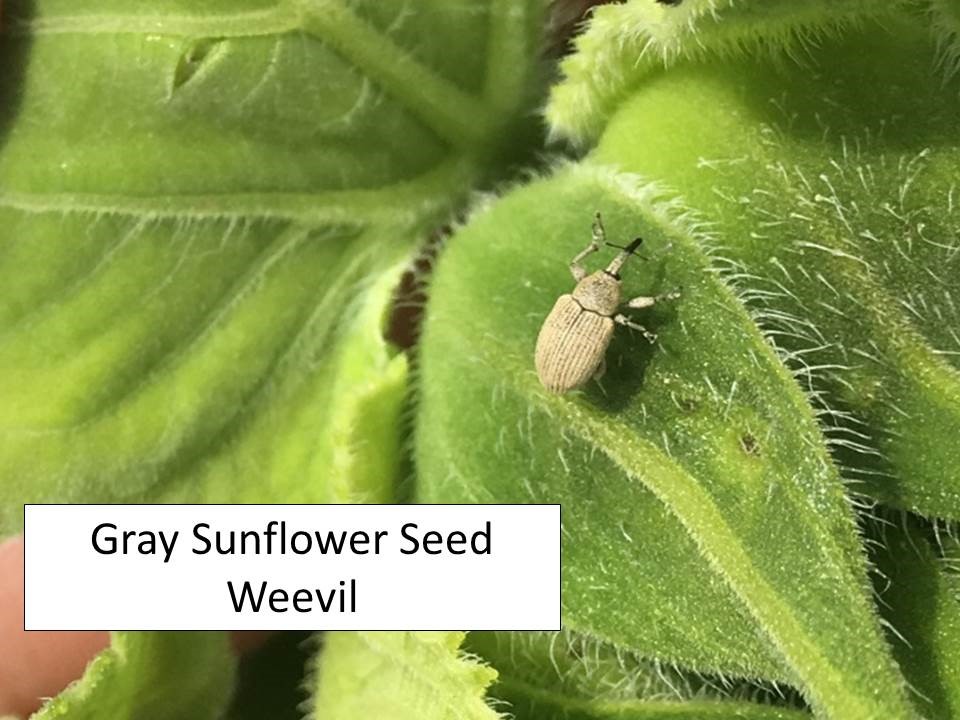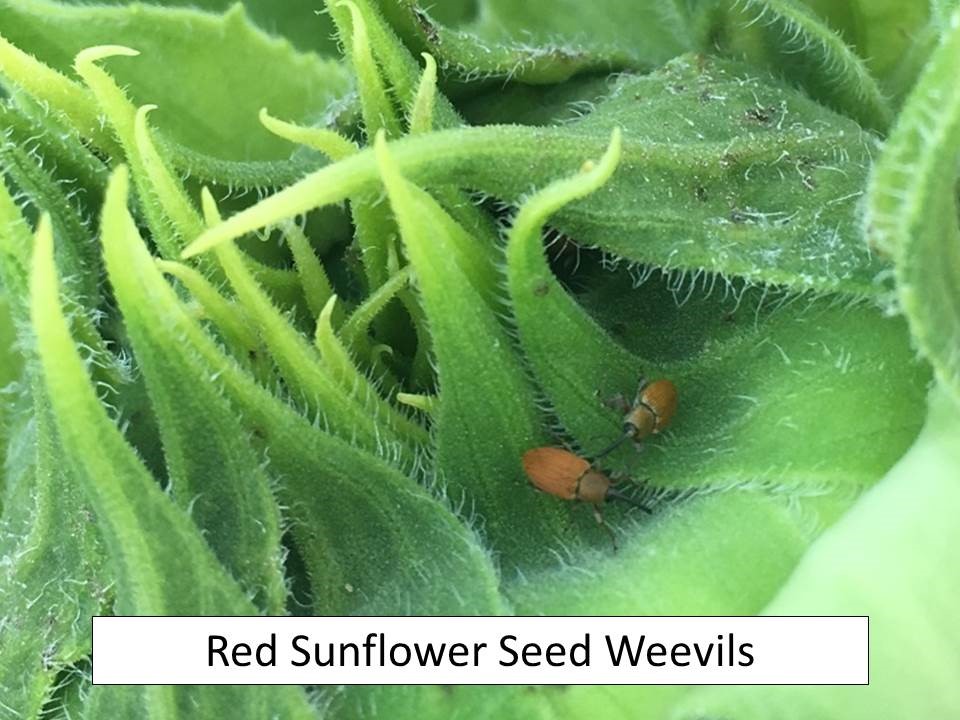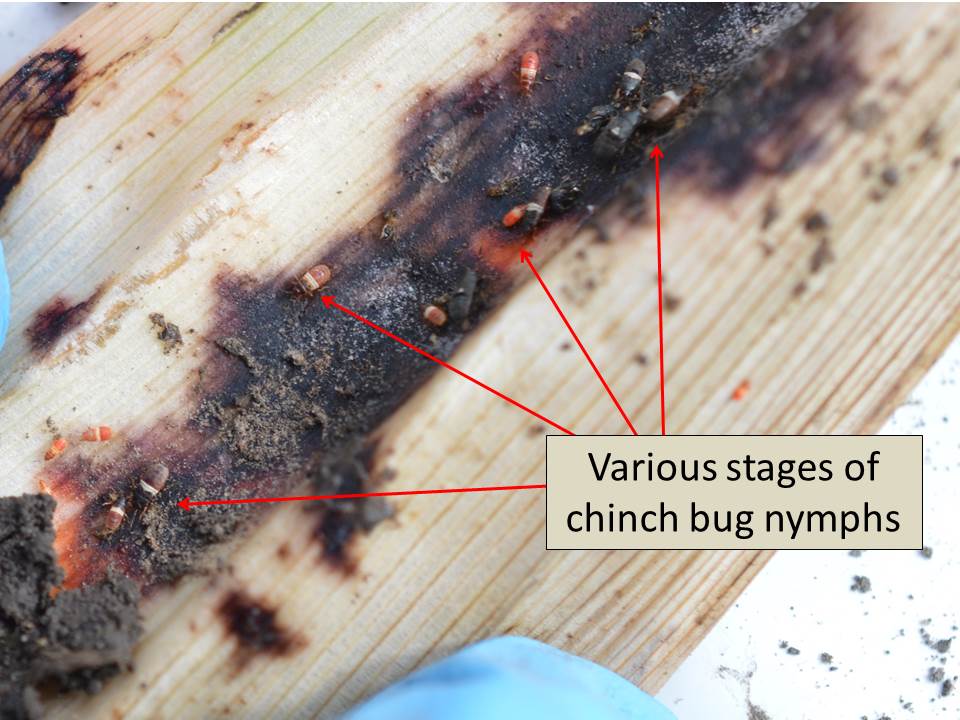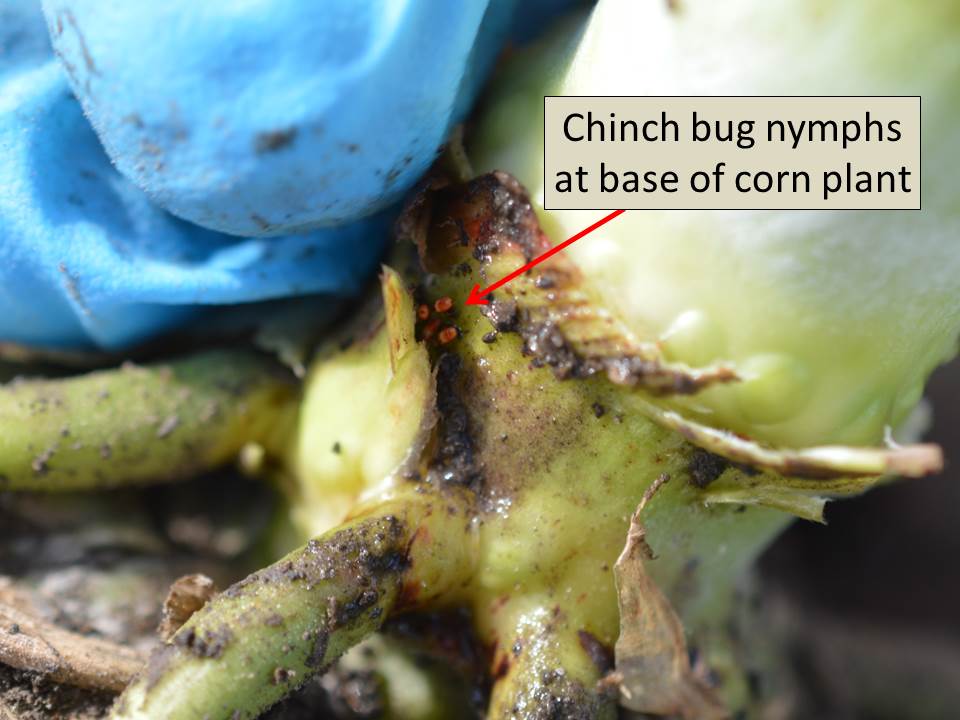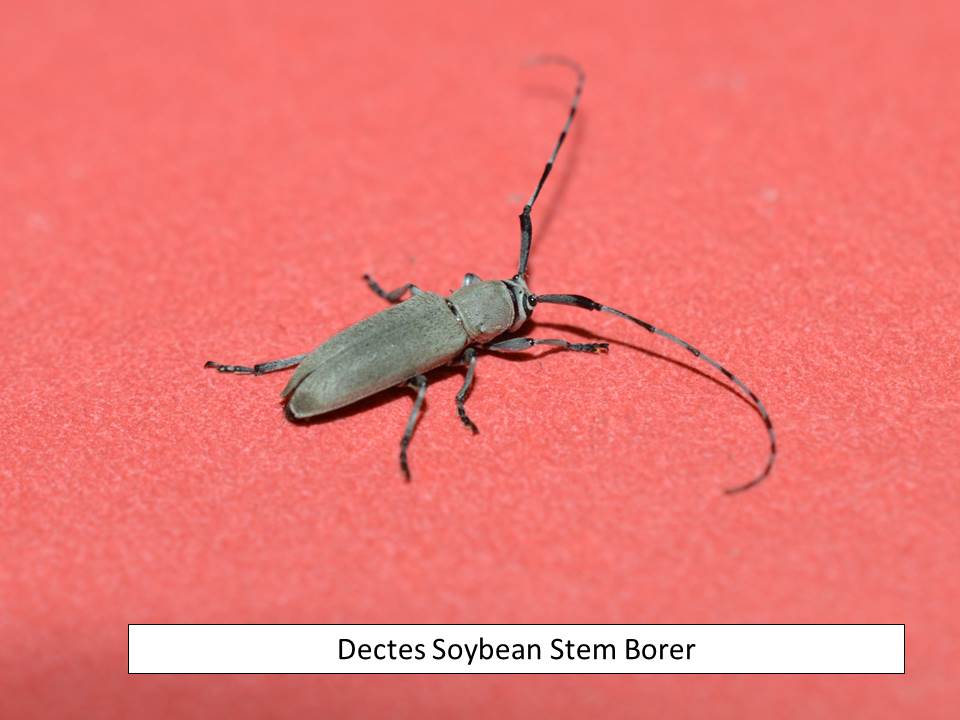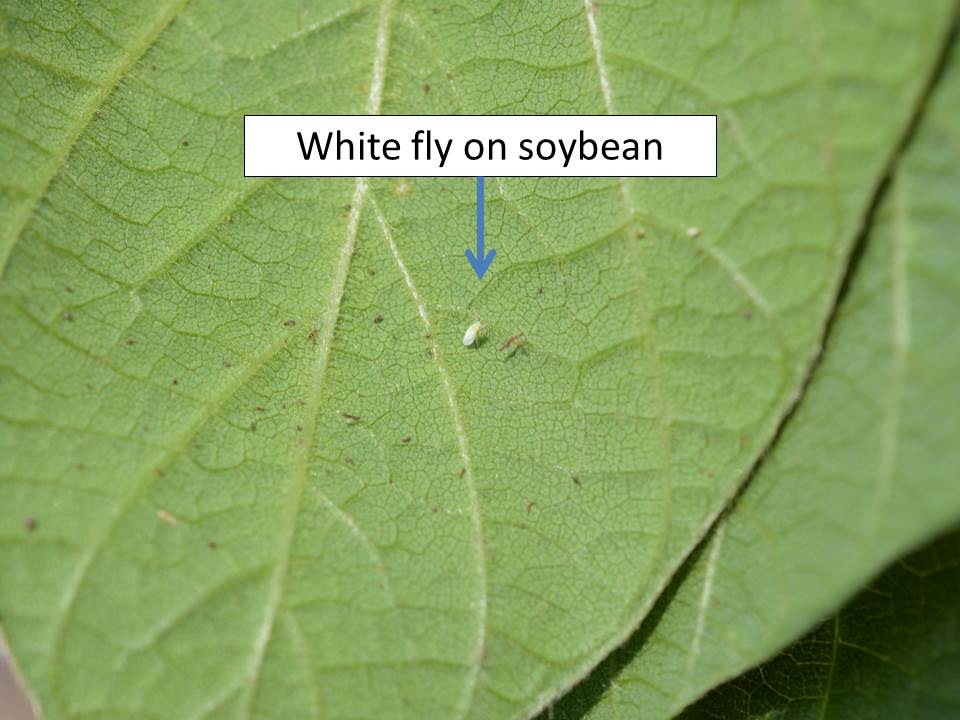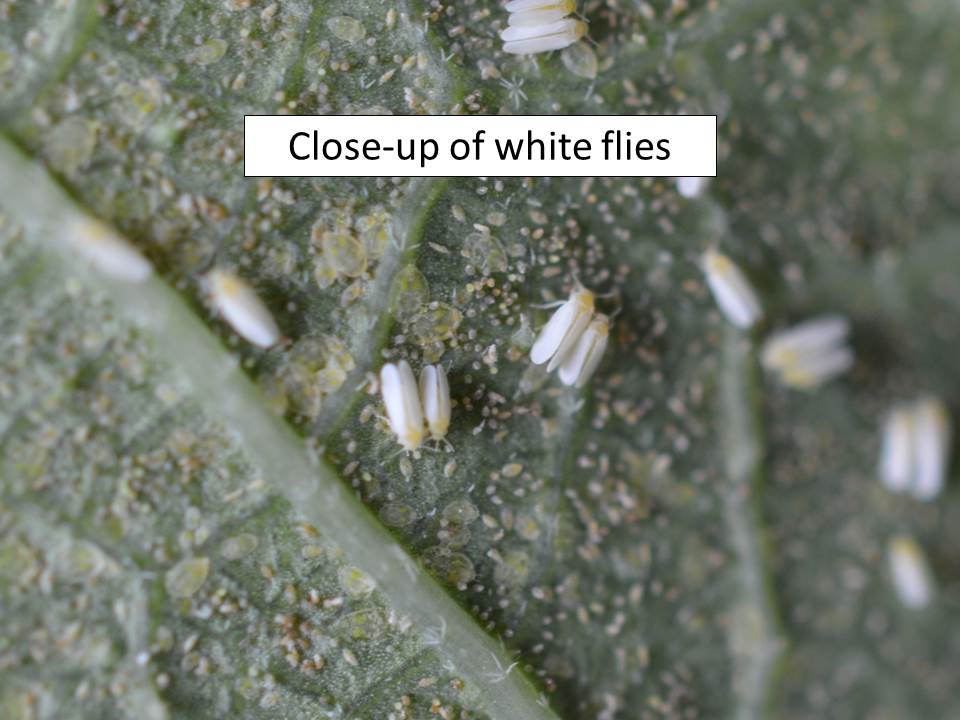— by Dr. Jeff Whitworth and Dr. Holly Schwarting
Green Cloverworms in Soybeans
Remember a few weeks ago when there was considerable concern relative to all the green cloverworms causing irregular holes in leaves? Even skeletonizing some areas of some fields until treated with an insecticide and/or and entomopathogenic fungus started decimating the larval populations? Well, the surviving larvae pupated and now are annoying little aerodynamically shaped dark brown moths flying around lights at night or trying to get in through doors and windows.
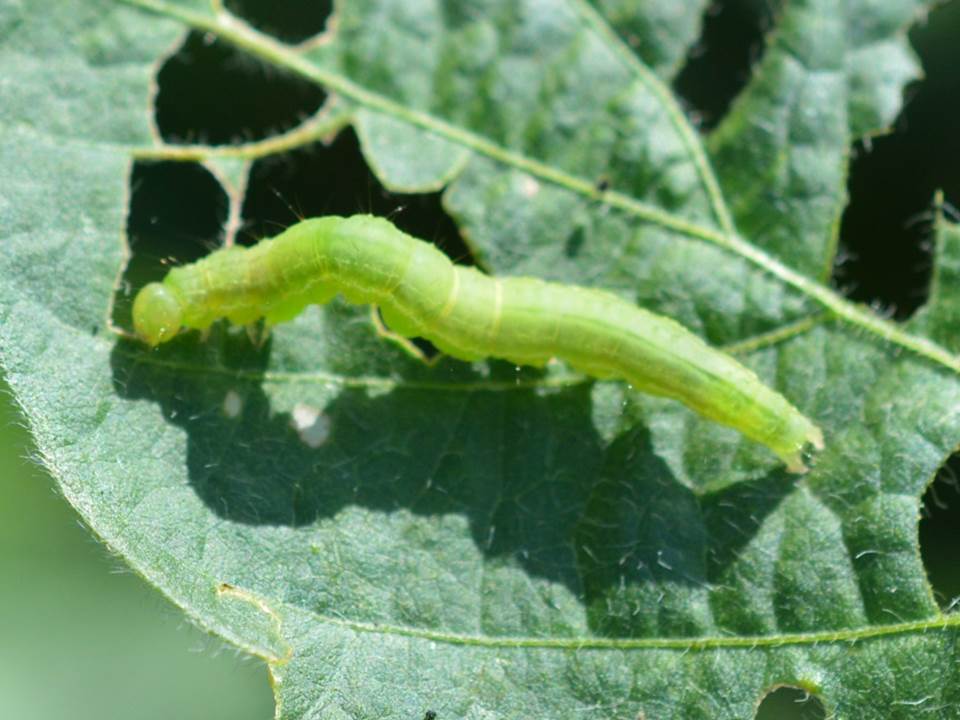


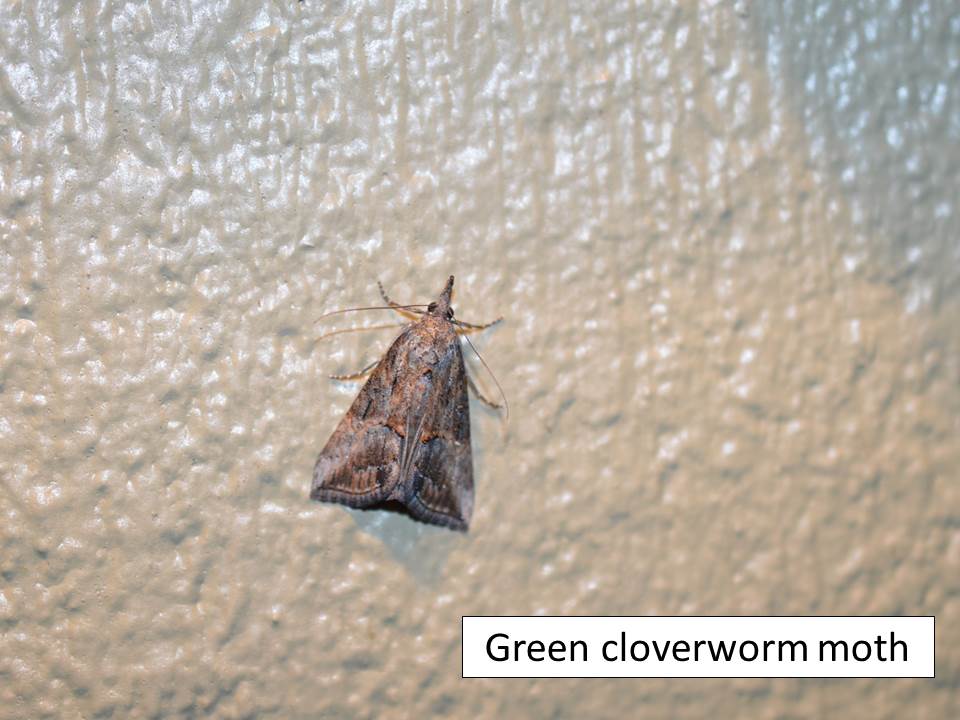
These moths will mate and then begin ovipositing in soybean and/or alfalfa fields. Eggs hatch in approximately 10-14 days and the larvae will again start feeding on leaves of either crop. By this time of year, the larval feeding is usually of little consequence relative to yield. However, really late planted soybeans, and all alfalfa fields, should be closely monitored to ensure leaf feeding in either crop does not affect pod fill in soybeans or leaf area in alfalfa.
Soybean Podworms
These insect pests seem to be on about the same developmental schedule as green cloverworms. So, late planted soybeans may be at risk for bean feeding within the pods.
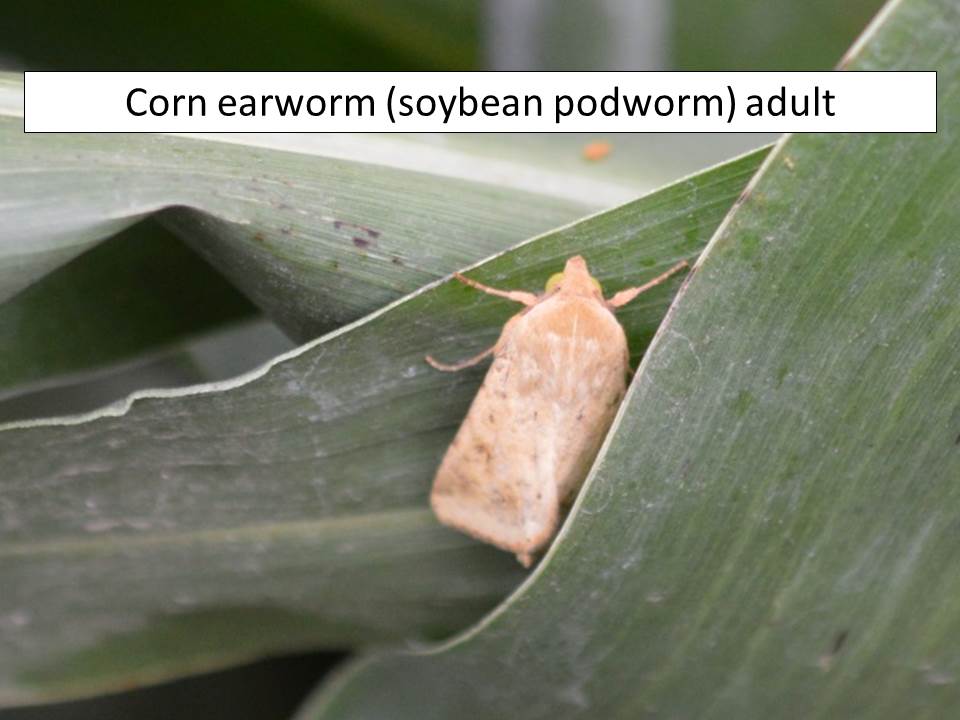

Adult bean leaf beetles, while probably not as numerous as in past years, may still be feeding on the pods themselves. This can cause yield reductions. For more information on bean leaf beetle biology and control, please visit: https://www.bookstore.ksre.ksu.edu/pubs/MF2824.pdf


Woollybear Larvae
Another leaf feeder that can cause concern this time of year is woollybear caterpillars. There are several different species but all are foliage feeders although they rarely cause any economic problems.
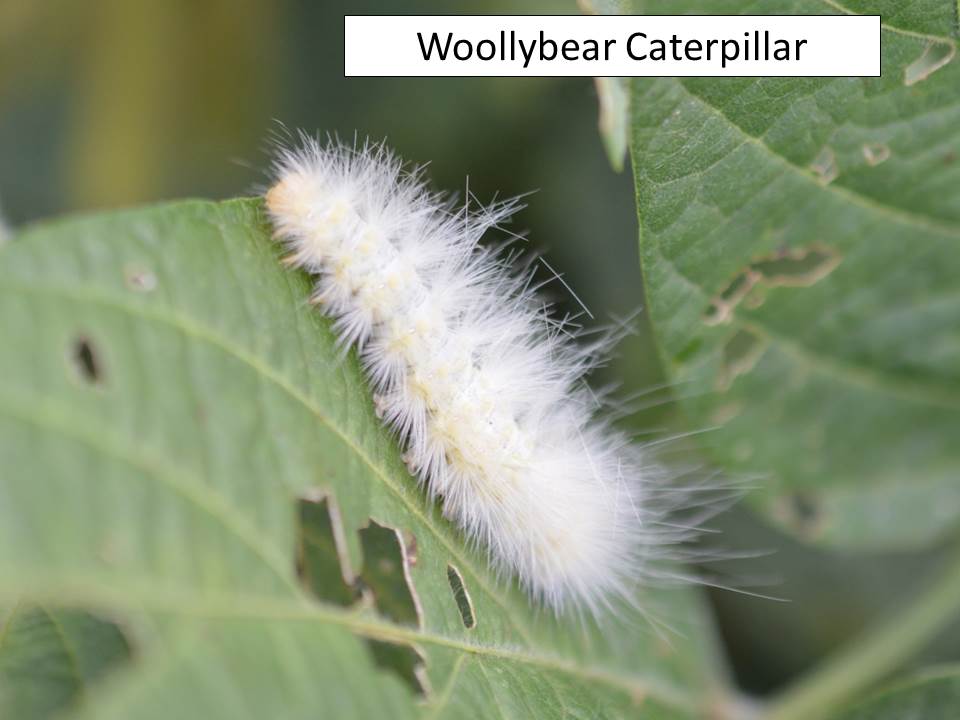

Stink Bugs
Hopefully, most soybeans are past the stages that are succulent enough for stink bugs to be feeding on. However, there are still some late planted beans setting pods with seeds that may be vulnerable to stink bug feeding. So, until pods are turning yellow or brown, fields probably should continue to be monitored for soybean podworms, adult bean leaf beetles, and stink bugs.
